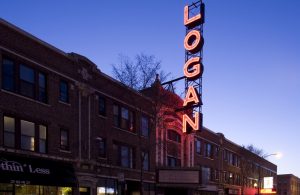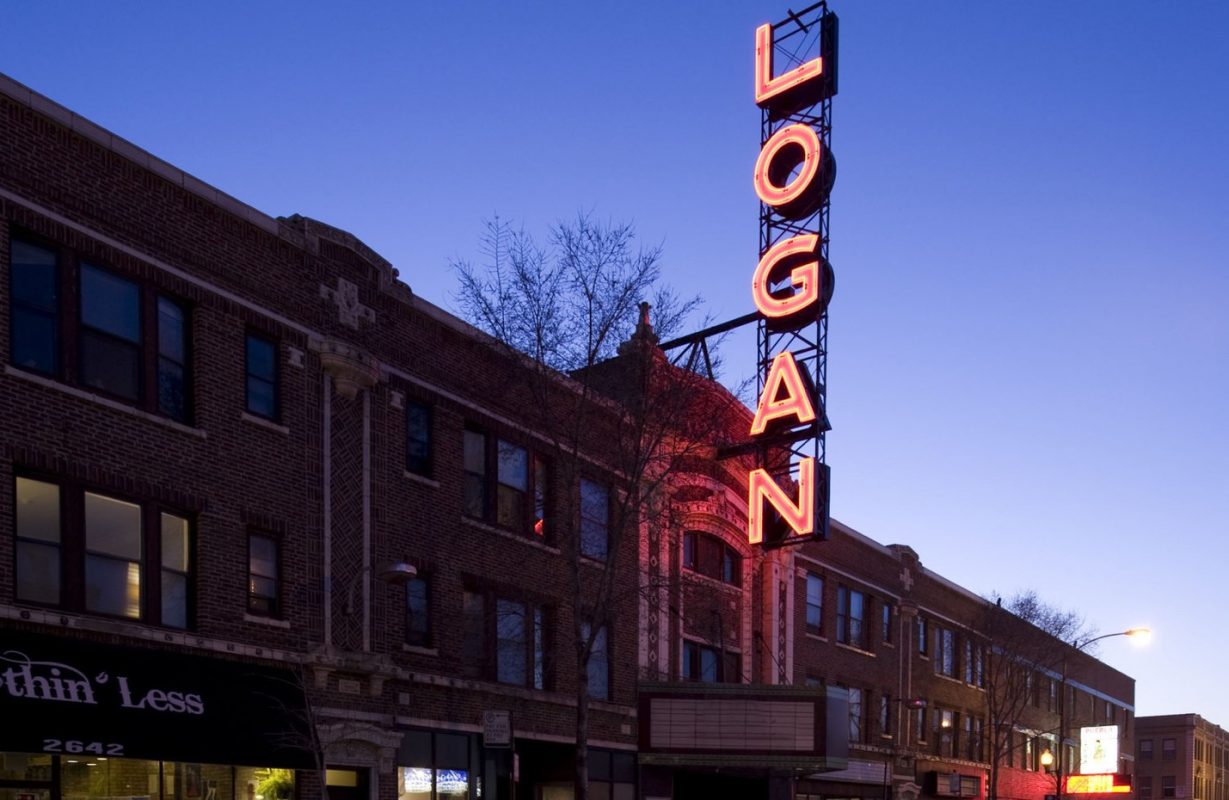Authors: Shereen Al-Sawwaf, Nick Eklund, Atrician Lumumba and Kuba Sokolowski.

Picture credit: Logansquarechicago.com
Located on the Northwest Side of Chicago, Logan Square has seen its streets transform from a hub for European immigrants to a center of Latino culture in Chicago to a trendy nexus of gentrification. In recent years, the city has invested time and energy into making Logan Square a destination for sustainability, as well. An important issue moving into the future of this historic district will be how the push for a resilient and sustainable neighborhood intersects with ongoing polemical socioeconomic transformations.
One current sustainable design program for Logan Square is the aptly-named Logan Square Open Space Plan. Logan Square once had the second-smallest amount of open space in the entire city. As such, this plan recommended the addition of fifteen acres of open space through various means, primarily by creating park space from bits of an abandoned rail line and vacant lots. This was a shift from the boulevard-centric way in which open space was created in the past. Before the Logan Square Open Space Plan, fifty percent of the community area’s open space acres were passive areas that were part of the boulevard system. The 2004 plan was a step towards active and conscious open space implementation and design which reimagined the way urban residents interact with green space which was preceded by the CitySpace program, which converted public schoolyards into green spaces.
Logan Square also includes the Green Exchange, allegedly the nation’s largest green business community. The Green Exchange building is a refitted historic lamp factory on Diversey Avenue with a platinum LEED rating. It is home to a variety of enterprises dedicated to sustainability and boasts environmentally friendly amenities such as a green roof and an organic sky garden. The energy sustainability of the building complements these features as the building itself is designed to consume twenty-two percent less electricity than other buildings its size.
Further improvements to sustainability might include efforts to switch to more compact settlements by converting many of the single-family homes into apartment buildings and increasing the proximity of resources so that residents don’t have to travel by car as frequently. Another approach would be to make biking more accessible and safer. This could be done by increasing the number of protected bike lanes. Currently, Logan Square has a good amount of bike lanes that could be used more frequently if they were safer. By providing protected bike lanes, people who are afraid of being hit by cars are more likely to ride their bikes and decrease carbon emissions. Additionally, other incentives such as discount Divvy subscriptions should be provided to frequent bike riders to increase the sustainability of Logan Square.
As important as sustainable design is Logan Square’s future, it is important that this push for sustainability be cognizant of another major factor at play in the neighborhood: that of gentrification. Historically, the inexpensive housing in Logan Square has made it an affordable destination for Scandinavian, Eastern European, and Latino immigrants over the generations, this affordability—combined with the neighborhood’s central location along the Blue Line and its rich architecture—has made it a hotspot for twenty-first century gentrification. As a result, the last fifteen years have seen Logan Square lose more Hispanic residents than any other Community Area in Chicago while the white population has increased. Teardowns of old buildings, new developments, and the threat of rising rents have slowly encouraged many Latino residents to head west to more affordable neighborhoods such as Hermosa and Belmont-Cragin. When considering the concepts for new development, it’s important to keep in mind this vulnerable population of long-term residents. Will new construction cater to their needs or be complicit in transforming the neighborhood to the point that it is no longer affordable? Such questions can even target sustainable developments like the aforementioned Green Exchange. While it is an admirable adaptive reuse of an industrial space, it is part of a wider narrative within the neighborhood: the employment rate of Logan Square residents in the production and manufacturing sector was 44 percent higher than the citywide average in 2010, suggesting a dependency of the local working class on such jobs. While developments like Green Exchange work wonders for the sustainable potential of the area and bring in new jobs for policymakers, environmentalists, and engineers, what is the extent of their benefit for existing residents of the neighborhood?
Logan Square is a community area at the forefront of change in Chicago. While not an issue unique to Logan Square, gentrification continues to change the overall makeup of the community area from the people to the buildings to the culture. Sustainability efforts are widespread in Logan Square. However, re-development projects also have the potential to enhance the effects of gentrification. Thus, Logan Square is in a critical position, needing to navigate between promoting the furthering of Chicago’s overall sustainability while ensuring those native to the community area can retain their homes, culture, and everyday lives.
Sources:
Logan Square, History of Logan Square: https://logansquarechicago.com/history-of-logan-square-chicago/
City of Chicago, Sustainable Development: https://www.cityofchicago.org/city/en/depts/dcd/supp_info/logan_square_openspaceplan.html
Chicago Stories, Sustainability:
http://chicagostories.org/sustainability/
DNA Info, Logan Square’s Hispanic Population Dropped by 19000 Since 2000
Block Club Chicago, Logan Square Activists to March for Development Without Gentrification
